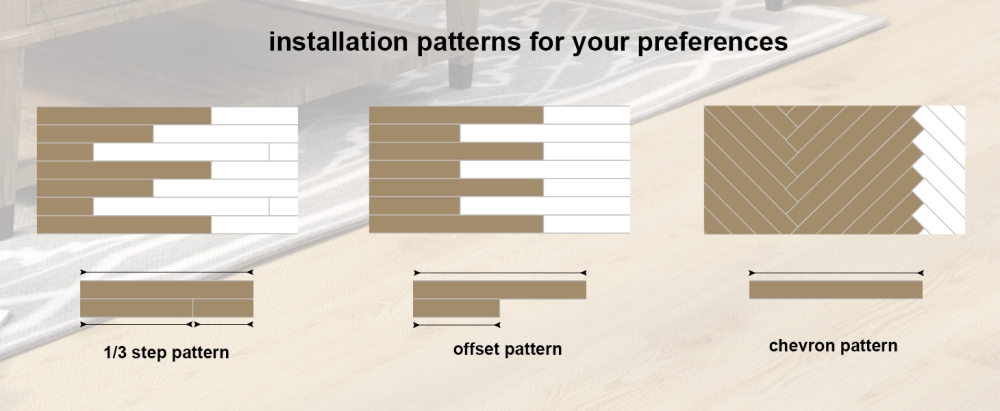Vinyl Floor Tiles: A Comprehensive Guide to Features and Benefits
Introduction
Vinyl tiles have become one of the most popular flooring choices for both residential and commercial spaces due to their durability, affordability, and aesthetic versatility. Whether you’re renovating a home, designing an office, or upgrading a retail space, vinyl tiles offer a practical and stylish solution.
This in-depth guide explores the key features of vinyl tiles, highlighting their advantages, types, installation methods, maintenance, and suitability for different environments. By the end of this article, you’ll have a thorough understanding of why vinyl tiles are a top flooring choice in 2025.
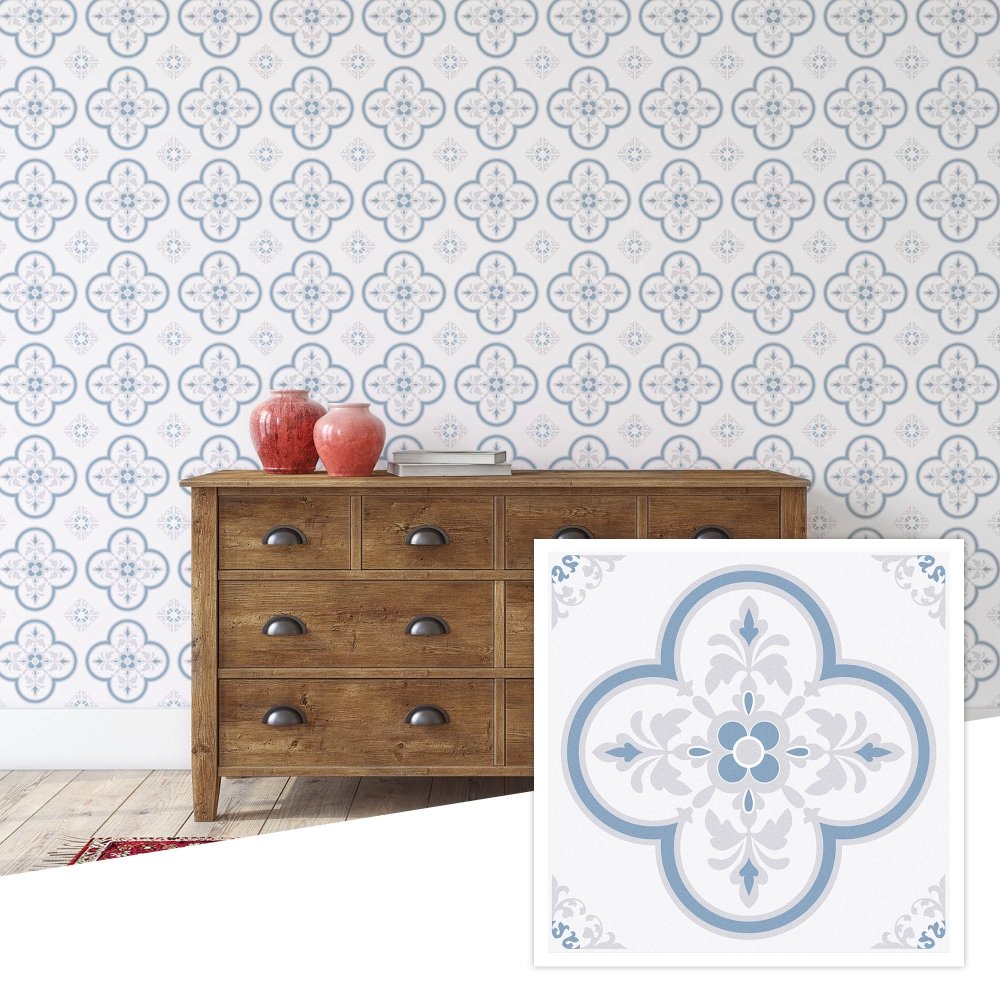
1. What Are Vinyl Floor Tiles?
Vinyl tiles are synthetic flooring materials made primarily from polyvinyl chloride (PVC), combined with plasticizers, stabilizers, and pigments. They come in various forms, including luxury vinyl tiles (LVT), vinyl composition tiles (VCT), and rigid core vinyl tiles (SPC/WPC).
2.Key Characteristics of Vinyl Flooring
- Waterproof & Moisture-Resistant
Vinyl flooring is engineered to resist water penetration, making it an excellent choice for moisture-prone areas such as kitchens, bathrooms, and basements. Unlike traditional hardwood or laminate, it won’t warp, swell, or develop mold when exposed to spills or humidity. Some rigid-core vinyl options are even suitable for outdoor patios if UV-stabilized. - Durable & Scratch-Resistant
Designed to withstand heavy foot traffic, furniture movement, and accidental impacts, vinyl flooring features a protective wear layer that guards against scratches, dents, and stains. High-quality luxury vinyl tiles (LVT) can endure decades of use without significant wear. - Versatile Designs
Advanced digital printing technology allows vinyl flooring to convincingly mimic natural materials like hardwood, stone, and ceramic, as well as modern abstract patterns. Homeowners can choose from a wide range of colors, textures, and layouts, including herringbone, chevron, and geometric designs. - Easy InstallationVinyl flooring offers multiple installation methods to suit different skill levels and project requirements:
(1)Peel-and-stick – Simple DIY application with self-adhesive backing.2.
(2)Click-lock (floating floor) – Interlocking planks for quick, tool-free assembly.
(3)Glue-down – Provides a permanent, stable fit ideal for high-traffic commercial spaces.
- Comfortable Underfoot
Softer than ceramic tile or stone, vinyl flooring reduces fatigue and joint strain, making it more comfortable for prolonged standing. Some varieties also include built-in acoustic underlayment for noise reduction, enhancing comfort in multi-level homes or apartments.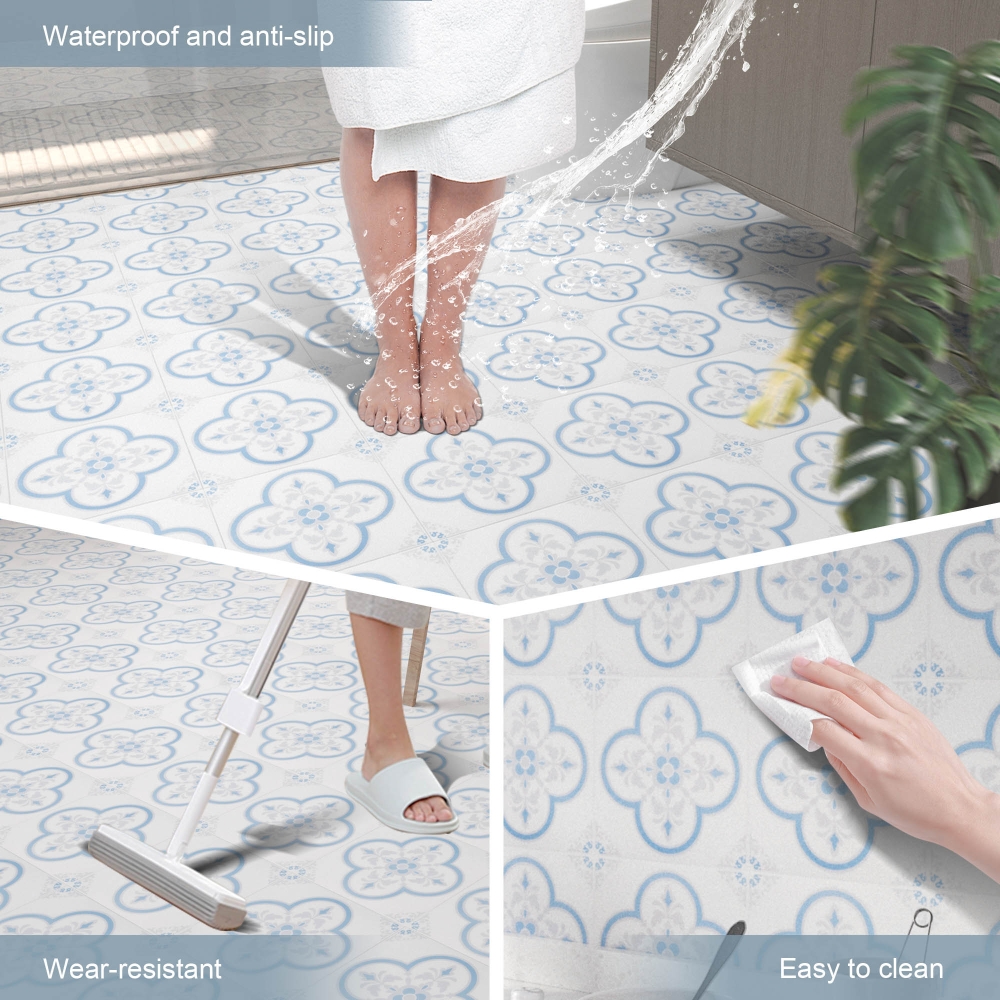
3.Types of Vinyl Tiles
Vinyl flooring comes in several formats, each tailored to different functional and aesthetic needs:
A. Luxury Vinyl Tiles (LVT)
- Premium Look & Feel – High-definition printing and embossing replicate the texture and grain of natural wood or stone, offering a high-end appearance at a fraction of the cost.
- Thicker Wear Layer (6-20 mils) – Provides superior durability, making it ideal for residential and upscale commercial spaces.
- Best for Homes & High-End Applications – Combines elegance with practicality, suitable for living rooms, bedrooms, and retail environments.
B. Vinyl Composition Tiles (VCT)
- Budget-Friendly – Commonly used in schools, hospitals, and offices due to its affordability and resilience.
- Requires Periodic Maintenance – Unlike LVT, VCT needs regular waxing and polishing to maintain its shine and durability.
- Less Waterproof – Best suited for dry or low-moisture areas, as prolonged water exposure can damage the material.
C. Rigid Core Vinyl (SPC/WPC)
- Stone Plastic Composite (SPC) – Extremely rigid and stable, perfect for high-traffic commercial spaces and areas prone to temperature fluctuations.
- Wood Plastic Composite (WPC) – Slightly softer than SPC, offering better sound absorption and underfoot comfort.
- 100% Waterproof – Ideal for basements, laundry rooms, and commercial kitchens where moisture resistance is critical.
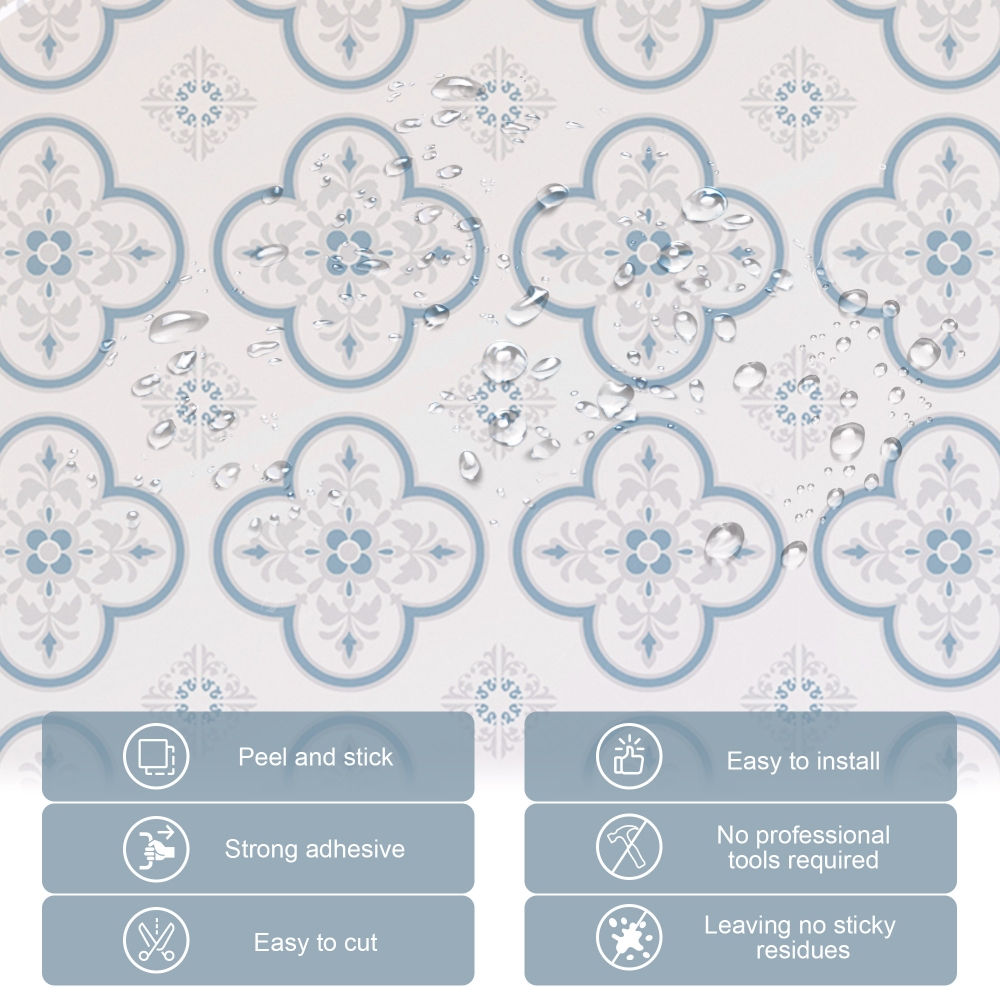
4.Key Features of Vinyl Flooring
(1)Durability & Longevity
- Scratch & Stain Resistance – UV coatings and wear layers protect against daily wear, pet claws, and spills.
- Impact Resistance – Handles heavy furniture, dropped objects, and rolling loads without damage.
- Lifespan (10-20 Years) – With proper care, high-quality vinyl flooring can last decades, making it a cost-effective investment.
(2)Waterproof & Moisture-Resistant
- Unlike hardwood or laminate, vinyl does not absorb water, preventing warping, swelling, or mold growth.
- Suitable for wet areas like bathrooms, laundry rooms, and even outdoor spaces (if UV-protected).
(3) Easy Installation Options
- Peel-and-Stick – No adhesive needed, perfect for quick renovations.
- Click-Lock (Floating Floor) – Interlocking planks allow for fast, tool-free installation.
- Glue-Down – Ensures a permanent, stable fit for high-traffic commercial applications.
(4) Comfort & Sound Absorption
- Softer Underfoot – Reduces fatigue compared to hard surfaces like tile or concrete.
- Noise Reduction – Some products feature integrated underlayment to minimize sound transmission.
(5)Low Maintenance
- Easy to Clean – Regular sweeping and occasional mopping with mild cleaners are sufficient.
- No Waxing Required – Most LVT and rigid-core vinyl are maintenance-free, unlike VCT.
(6)Aesthetic Versatility
- Realistic Wood & Stone Effects – Advanced embossing and printing create authentic textures.
- Customizable Layouts – Options include herringbone, chevron, and mosaic patterns for unique designs.
(7) Eco-Friendly Options
- Recyclable Materials – Some brands use recycled vinyl and sustainable manufacturing processes.
- Low VOC Emissions – Ensures better indoor air quality, making it safe for homes and offices.
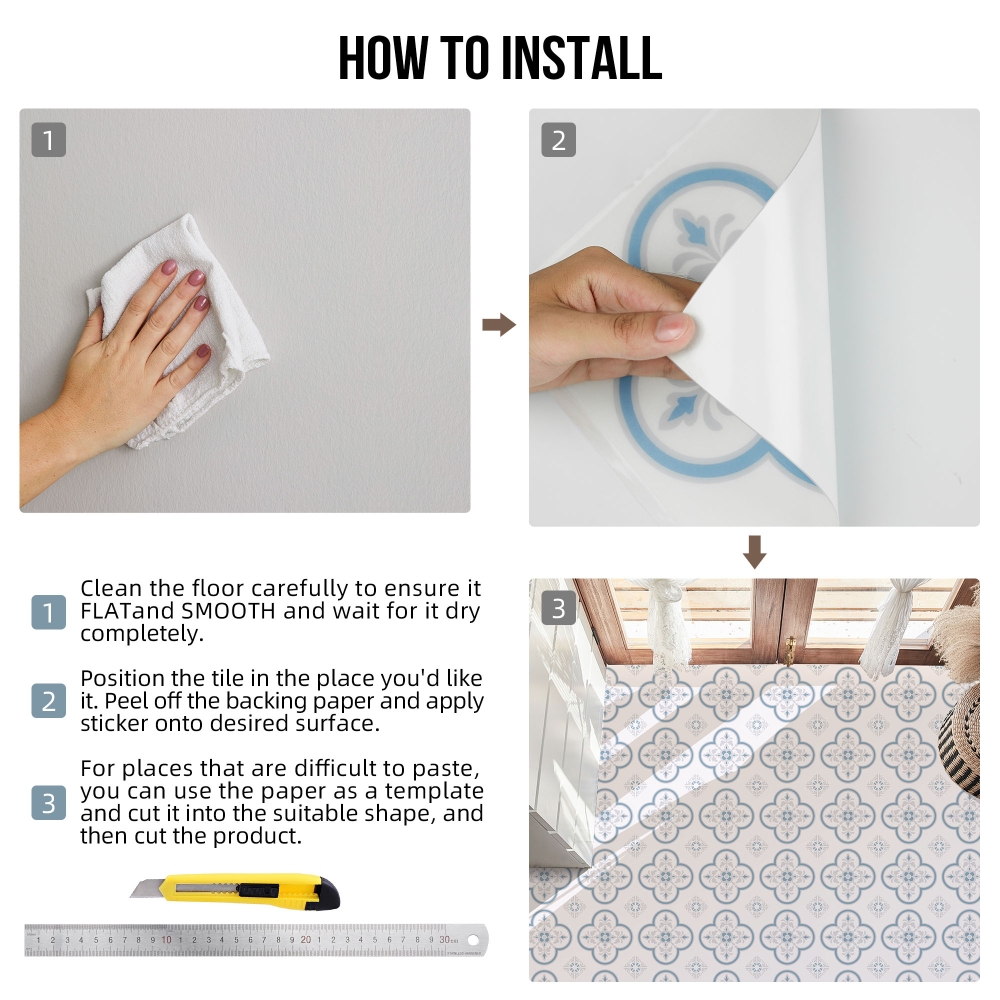
5. Installation & Maintenance Tips
Installation Steps:
- Subfloor Preparation – Must be clean, dry, and level.
- Acclimatization – Let tiles sit for 24-48 hours before installation.
- Layout Planning – Avoid small cuts at edges.
- Cutting & Fitting – Use a utility knife or vinyl cutter.
- Finishing Touches – Add transition strips and baseboards.
Maintenance Guide:
- Daily Cleaning – Sweep or vacuum to remove dirt.
- Mopping – Use a damp mop with pH-neutral cleaner.
- Avoid Harsh Chemicals – Bleach or ammonia can damage the surface.
- Protect from Heavy Furniture – Use felt pads under chair legs.
7. Future Trends in Vinyl Flooring (2025 & Beyond)
1. Enhanced Digital Printing & Hyper-Realistic Designs
Advancements in high-definition digital printing will enable vinyl flooring to mimic natural materials (e.g., wood, stone, ceramic) with unprecedented accuracy. Expect:
- 3D embossing for tactile realism, matching visual patterns to textured surfaces.
- Customizable designs via AI-driven tools, allowing personalized patterns or brand-specific aesthetics.
2. Sustainable Materials & Circular Economy Focus
Eco-conscious production will dominate, driven by stricter regulations and consumer demand:
- Bio-based vinyl using plant-derived polymers (e.g., cornstarch, soybean oil) to reduce fossil fuel reliance.
- Post-consumer recycled content (up to 50%+) in tiles, coupled with closed-loop recycling programs.
- Low-VOC adhesives and phthalate-free formulations for healthier indoor air quality.
3. Smart Flooring with Integrated Technology
Vinyl floors will evolve into interactive surfaces with embedded tech:
- Heating systems: Energy-efficient radiant heating layers for thermal comfort.
- Anti-microbial coatings: Silver-ion or copper-infused wear layers to resist bacteria/mold.
- IoT connectivity: Pressure sensors for occupancy monitoring in smart homes/offices.
4. Thinner, Stronger Wear Layers
Innovations in material science will yield:
- Ultra-thin yet durable wear layers (0.3–0.5mm) with ceramic bead reinforcement for scratch resistance.
- Self-healing coatings that repair minor scratches through heat or light activation.
5. Modular & Installation Innovations
- Interlocking systems with click-lock mechanisms for DIY-friendly, glue-free installation.
- Hybrid planks/tiles combining rigid core (SPC/WPC) with flexible edges for seamless expansion.
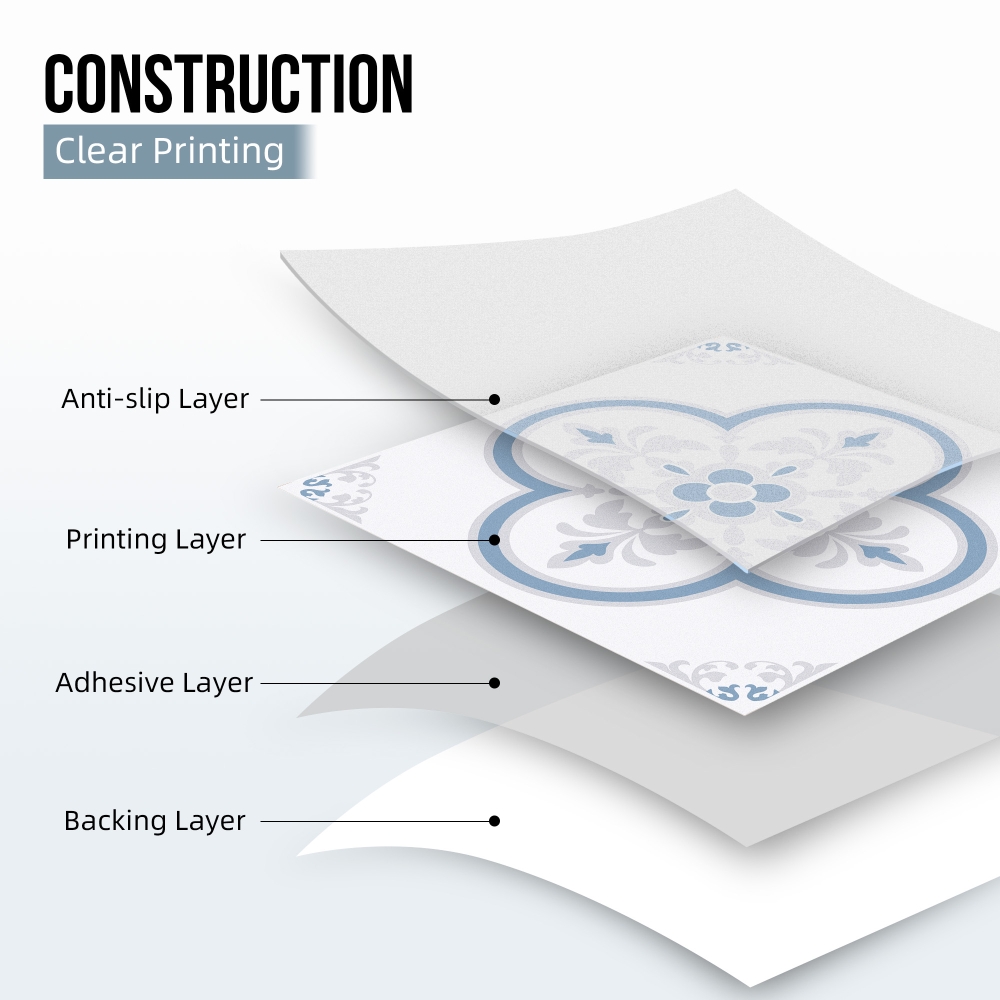
Conclusion
Vinyl flooring continues to redefine modern interiors by merging cutting-edge technology with sustainable practicality. Its unmatched durability, waterproof performance, and design versatility make it ideal for residential, commercial, and industrial spaces. Whether opting for luxury vinyl tiles (LVT) for high-end aesthetics or rigid core vinyl for extreme resilience, this adaptable material delivers the perfect synergy of function and style. As 2025 unfolds, expect vinyl to lead the flooring industry with innovations that prioritize sustainability, smart living, and hyper-realistic beauty.
 ilemong
ilemong
